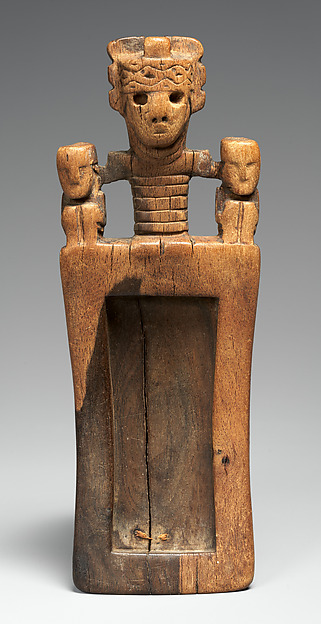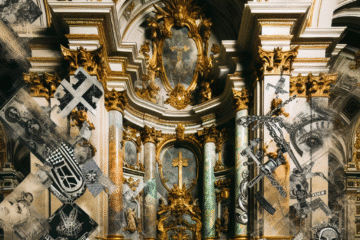
Image title: Snuff tray
Medium: Wood, fiber, copper alloy
Date: 500–1000 CE
Source:
The Met Collection
“
So long as a person is capable of self-renewal they are a living being.
”
— Henri-Frédéric Amiel
Weaving Time: Indigenous Fiber Arts as Living Historical Documents
Introduction: Textiles as Storytellers
Across continents and centuries, Indigenous fiber arts have served not merely as objects of utility or decoration, but as vital expressions of history, culture, and identity. From the multicolored Quechua weavings of the Andes to the intricate basketry of the Chitimacha in North America, these fiber-based creations encapsulate expansive narratives. In them are woven genealogies, spiritual cosmologies, territorial maps, and acts of resistance. This blog explores how Indigenous garments, baskets, and textiles act as visual records—living historical documents that transmit knowledge through time.
1. Ancient Threads: The Origins of Fiber Art Traditions
The earliest traces of fiber arts extend back to prehistoric times, long before European textual histories. In the Andes, for instance, archaeologists have uncovered woven fragments dating back over 10,000 years, bearing geometric patterns that predate even ceramics. These textiles served as both clothing and codified symbols—carrying information about ethnic identity, social status, and cosmology. The Paracas culture of ancient Peru created embroidered burial shrouds so elaborate that each thread seems a pixel in a textile-based scripture. In the Pacific, tapa cloth made from bark by Polynesian nations combined abstract motif systems with oral genealogies transmitted from generation to generation.
2. Conquest and Resistance: Stitching Survival Under Colonization
The arrival of colonial forces triggered violent disruptions to Indigenous lifeways worldwide, but fiber arts emerged as tools of subtle resistance. For Navajo weavers, the use of traditional looms and dyes under U.S. colonization became a form of quiet defiance; patterns evolved to encode memory and meaning under the strictures of boarding schools and reservation life. In Central America, Mayan weavers began incorporating forbidden glyphs into huipils—traditional blouses—as a way to protect and transmit suppressed languages and histories. Far from being passive artifacts, these textiles became active agents in cultural survival, channeling ancestral wisdom through coded motifs and persistent hands.
3. Sacred Geometry: Philosophies Woven in Thread
Many Indigenous textile traditions are deeply connected to sacred philosophies and cosmological models. In the Andes, the Andean cross or chakana appears in countless weavings, symbolizing the interconnectedness of the three realms: the underworld, the earthly world, and the spiritual sky. For the Yoruba, adire textiles—created through complex resist-dye techniques—serve to visually express oríkì, a form of poetic praise that encapsulates individual identity and collective ancestry. Designs are not accidental ornamentation but meaningful abstractions; they are visual mantras that renew a community’s spiritual and cultural framework with every iteration.
4. Modern Revivals and Technological Evolution
Today, Indigenous fiber arts are experiencing a powerful renaissance, enriched by new technologies and global artistic exchange. In Canada, Inuit artists blend traditional skin stitching with synthetic fibers to create hybrid garments that speak to climate change and cultural resilience. Digital design tools are now being embraced by Indigenous artists to preserve patterns and teach younger generations. Projects like the Pachamama Program in Peru enable weavers to archive their designs with QR codes that link to oral histories, photographs, and language revitalization efforts. Technology, when aligned respectfully, becomes another thread in the complex weave of continuity and innovation.
5. Beyond the Gallery: Reframing Fiber Arts as Living Archives
Museums and collectors have traditionally framed Indigenous textiles as ethnographic artifacts—objects of study rather than voices to be heard. But a shift is emerging. Exhibitions curated by Indigenous scholars increasingly foreground community narratives and resist static interpretations. Basketry is reframed not as ‘craft’ but as spatial memory. Garments are shown not as costume but as embodied philosophies. In this recontextualization, fiber arts reclaim their rightful place as dynamic, living archives—repositories not of a past that is gone, but of a lineage that endures, evolves, and asserts its presence with every stitch and weave.
Conclusion: A Fiber of Memory
The tactile languages of Indigenous fiber arts offer us something rare: a truth that cannot be reduced to text alone. They are performances of history, rituals of transformation, and strategies of endurance. To understand these creations is to engage not just with color and form, but with the rhythm of generations. In every pattern lies a journey, a prayer, a breath. As the world reckons with the impacts of colonization and cultural loss, these weavings become guideposts—threads that bind the past to the present, and the act of making to the act of remembering.

Image description:
Traditional highland weavings, and woman using a backstrap loom, Guatemala.
License:
CC BY-SA 3.0
Source:
Wikimedia Commons
Useful links:


